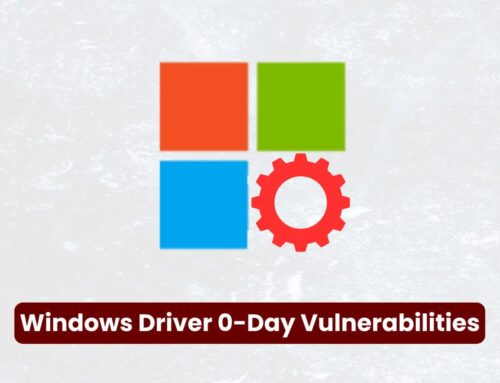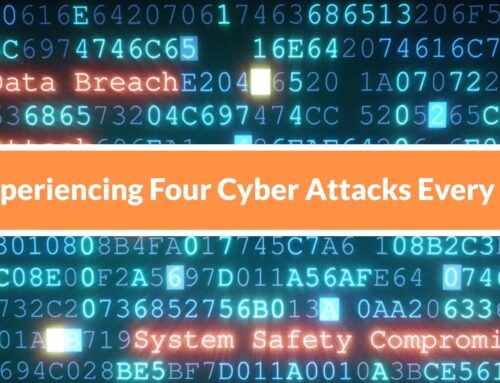
New Spear Phishing Attack Delivers VIP Keylogger via EMAIL Attachment
New Spear Phishing Attack Unmasks VIP Keylogger via Email Attachments
The digital threat landscape is in constant flux, and a recent development highlights this evolution with unsettling clarity: a sophisticated spear-phishing campaign is actively deploying the notorious VIP keylogger. This attack leverages meticulously crafted email attachments, masquerading as legitimate payment receipts, to infiltrate target systems. The method represents a significant escalation in the keylogger’s delivery, demonstrating threat actors’ heightened adaptability and technical prowess in bypassing contemporary security defenses.
Understanding this evolving threat is paramount for IT professionals, security analysts, and developers responsible for organizational security posture. The shift in delivery mechanism underscores the need for continuous vigilance and robust defensive strategies against ever more cunning adversaries.
Understanding the VIP Keylogger and its Evolution
The VIP keylogger is a malicious software designed to record keystrokes, capturing sensitive information such as usernames, passwords, financial data, and other confidential communications. Its primary objective is data exfiltration, enabling attackers to gain unauthorized access to accounts and systems. While details on specific CVEs for the VIP Keylogger’s vulnerabilities are not publicly enumerated as it’s a specific malware strain rather than a software vulnerability, its deployment often exploits common user behaviors and system configurations.
Previously, VIP keylogger delivery might have relied on less sophisticated methods. However, this latest campaign marks a critical pivot towards highly targeted spear-phishing. Instead of broad, generic email blasts, attackers are now investing significant effort in crafting personalized emails that appear to originate from trusted sources. The use of “payment receipts” is a classic social engineering tactic designed to induce a sense of urgency and legitimacy, compelling recipients to open the malicious attachment. This focus on individual targets distinguishes spear phishing from broad phishing attacks and significantly increases its success rate.
The attackers’ ability to circumvent modern security measures suggests an impressive understanding of email gateways, sandboxing technologies, and endpoint detection and response (EDR) systems. This adaptability confirms that organizations must move beyond signature-based detection and embrace behavioral analysis and threat intelligence.
Dissecting the Attack Vector: Malicious Attachments and Social Engineering
The core of this attack lies in its delivery mechanism: email attachments disguised as legitimate payment receipts. This approach exploits several human psychological biases and common business practices:
- Urgency: Receipts often imply a pending payment or a completed transaction, prompting immediate attention.
- Trust: The recipient is likely to trust an email that appears to be related to financial transactions, especially if it seems to come from a known vendor or service.
- Curiosity: Users may open the attachment to verify a charge, question its legitimacy, or simply file it for record-keeping.
Upon opening these seemingly innocuous attachments, the VIP keylogger is discreetly deployed onto the victim’s device. Once active, it begins its covert operation of logging keystrokes, capturing sensitive data, and transmitting it back to the attackers’ command and control (C2) servers. The subtlety of its operation makes early detection challenging, emphasizing the need for robust endpoint monitoring.
Remediation Actions and Proactive Defenses
Combating a sophisticated spear-phishing campaign requires a multi-layered defense strategy. Addressing both technical vulnerabilities and human factors is critical.
Organizational Measures:
- Enhanced Email Security: Implement advanced email gateway solutions with sandboxing capabilities, attachment scanning, and DMARC, DKIM, and SPF authentication to filter out malicious emails. Regularly review and update these configurations.
- Endpoint Detection and Response (EDR): Deploy EDR solutions across all endpoints. EDR can detect anomalous behaviors indicative of keylogger activity, even if traditional antivirus misses the initial infection.
- Network Segmentation: Isolate critical systems and data. If an endpoint is compromised, network segmentation can limit the lateral movement of the keylogger within the network.
- Regular Security Audits: Conduct regular penetration testing and vulnerability assessments to identify potential weaknesses in your defenses before attackers exploit them.
- Incident Response Plan: Develop and regularly test a comprehensive incident response plan for quickly identifying, containing, eradicating, and recovering from spear phishing and keylogger incidents.
User Education and Best Practices:
- Security Awareness Training: Continuously educate employees on the latest spear-phishing tactics, social engineering techniques, and the dangers of opening unsolicited attachments. Emphasize verification procedures for suspicious emails.
- Verify Sender Identity: Train users to always verify the sender’s email address, even if the display name appears legitimate. Look for inconsistencies in email addresses or suspicious domains.
- Hover, Don’t Click: Advise users to hover their mouse over links and attachments to reveal the true URL or file type before clicking.
- Report Suspicious Emails: Establish a clear process for employees to report suspicious emails to the IT security team for analysis.
- Multi-Factor Authentication (MFA): Enforce MFA across all critical accounts. Even if credentials are stolen by a keylogger, MFA can prevent unauthorized access.
Relevant Tools for Detection and Mitigation
Leveraging the right tools is essential for an effective defense against VIP keylogger and similar threats. Here are some categories and examples of tools:**
| Tool Category | Purpose | Examples |
|---|---|---|
| Email Security Gateway | Advanced threat protection, anti-phishing, sandboxing | Proofpoint, Mimecast, Microsoft Defender for Office 365 |
| Endpoint Detection & Response (EDR) | Behavioral analysis, threat hunting, incident response | CrowdStrike Falcon, SentinelOne, Microsoft Defender for Endpoint |
| Security Awareness Training Platforms | Employee education, phishing simulations | KnowBe4, Cofense, SANS Security Awareness |
| Network Intrusion Detection/Prevention (NIDS/NIPS) | Detecting C2 communications, anomalous network traffic | Snort, Suricata, Palo Alto Networks NGFW |
| Forensic Analysis Tools | Post-compromise analysis, malware identification | Volatility Framework, Autopsy, Wireshark |
Conclusion
The emergence of this new spear-phishing campaign delivering the VIP keylogger via sophisticated email attachments serves as a stark reminder of the persistent and evolving nature of cyber threats. Adversaries are constantly refining their tactics, and their success hinges on their ability to exploit both technological vulnerabilities and human psychology. Organizations must adopt a proactive and layered security approach, combining advanced technical controls with continuous security awareness training for all personnel.
Vigilance, swift response, and a commitment to ongoing security education are the cornerstones of defense against such insidious attacks. Remaining informed and adapting defenses to the latest threat intelligence is not merely advisable; it is imperative for safeguarding valuable data and maintaining operational integrity.





